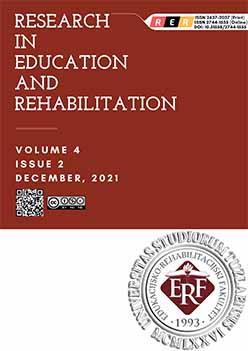THE POTENTIAL UTILITY OF THE CLOCK DRAWING TEST IN SPECIAL EDUCATION AND REHABILITATION
THE POTENTIAL UTILITY OF THE CLOCK DRAWING TEST IN SPECIAL EDUCATION AND REHABILITATION
Author(s): Sanela Slavković, Ivana Ignjatović, Sofija VišnjićSubject(s): Health and medicine and law
Published by: Edukacijsko-rehabilitacijski fakultet Univerziteta u Tuzli
Keywords: Clock Drawing Test; children; developmental disorder; multiple sclerosis; traumatic brain injury; dementia;
Summary/Abstract: This article aims to at analyze and point out the importance of the use of the Clock Drawing Test for cognitive screening in special education and rehabilitation with reference to early identification and adequate intervention for children and adults at risk, as well as to prevent the occurrence and intensification of disabilities. Through the simplicity of the test administration and scoring, as well as the great value of qualitative data based on the observation of participants’ behavior while performing the given task this test has gained popularity in research and clinical practice. On the other hand, in order to perform the given task, it is necessary to activate complex cognitive functions such as visuospatial / visuoconstructive skills and executive functioning. Given the difficulties in performing, the Clock Drawing Test may be indicative of a potential cognitive inefficiencies in the specified domains and/or executive dysfunctions, such as those related to the temporoparietal and frontal lobe structures. In this regard, the present article aims to present and discuss the utility of the Clock Drawing Test in children of different ages and types of developmental challenges (attention deficit hyperactivity disorder, learning disabilities) as well as in adults with multiple sclerosis, traumatic brain injury and dementia.
Journal: Research in Education and Rehabilitation
- Issue Year: 4/2021
- Issue No: 2
- Page Range: 165-180
- Page Count: 16
- Language: English

